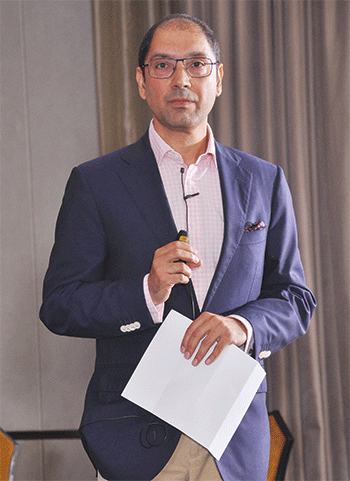Placing India on the global research map
 All the world’s top-ranked universities in the league tables of Quacquarelli Symonds (QS), Times Higher Education (THE) and Shanghai Jiao Tong University, excel in research. The logic of great universities focusing on research is simple — it attracts good faculty, higher grants and funding, but most important, it signals that the institution supports a culture of innovation and out-of-the-box thinking. Inevitably, students and faculty benefit because learning through research is the best way to learn.
All the world’s top-ranked universities in the league tables of Quacquarelli Symonds (QS), Times Higher Education (THE) and Shanghai Jiao Tong University, excel in research. The logic of great universities focusing on research is simple — it attracts good faculty, higher grants and funding, but most important, it signals that the institution supports a culture of innovation and out-of-the-box thinking. Inevitably, students and faculty benefit because learning through research is the best way to learn.
When higher education institutions establish research labs and facilities and commit themselves to engage in serious research and creation of new knowledge, it’s the first step toward moving from good to great. Conversely, a university without research commitment is no different from an undergrad college.
Unfortunately, most of India’s universities, public and private, lack research depth and have limited interest in innovation. Private universities in particular tend to believe that research is a waste of money, or at best, a necessary tick in the things-to-do box to get a good ranking in media and NIRF league tables. In these circumstances, it’s unsurprising that India’s higher education system suffers grievously in comparison with Western countries and even China, Singapore and S. Korea.
However, Indian universities have a great opportunity to develop the country’s research and innovation capability, and place themselves on the global research map.
Shoolini University is a young nine-year-old private university, founded by academics, sited in Himachal Pradesh, in the Himalayan foothills. Ab initio, we have made a commitment to developing intensive research capabilities in the multi-disciplinary area of Himalayan sustainability — life sciences, pharmacy, biotechnology, social sciences and engineering. We believe our focus on research will vault Shoolini University into the Top 200 league table of QS or THE or both, by 2022.
As indicated in the table below compiled by SciVal, the online research tool of Elsevier, the quality of research emerging from SU is superior to some of India’s best higher ed institutions.
Shoolini U’s research capability has been developed through six key initiatives which I am willing to share for adaptation and emulation.
• Initiate a culture of change by investing sizeably in research — faculty and infrastructure, and intra-mural funding. Empower and reward faculty who publish distinctive research, win competitive grants and stimulate innovation by registering patents. During the past nine years, Shoolini faculty have registered 150 patents which ranks us among the country’s Top 5 institutional innovators.
• Design high-quality Ph D programmes. The spearheads of every university’s research drive are its Ph D and research fellows. A primary duty of varsity leadership is to attract the best scholars and encourage and support them to deliver quality research output through provision of generous fellowships.
• Universities must compete for government, corporate and philanthropic grants. However difficult this is, winning large competitive grants is imperative to build research infrastructure and capability.
• Establish inter-disciplinary centres of excellence through collaboration, co-operation with like-minded universities and most important, with international research consortiums.
• Encourage undergraduates to pursue research. With proper guidance and mentorship, even undergraduate students can produce excellent results. They also benefit in the process because learning through research is the best way to learn.
• And finally, build an effective research office which monitors, mentors and supports researchers.
The late Steve Jobs who co-founded and developed Apple Inc into the world’s most valuable company in terms of market capitalisation, famously remarked, “The ones who are crazy enough to think that they can change the world, are the ones who do”. India’s future will be shaped by higher education institutions engaged in deep research and innovation. At least ten Indian universities need to be ranked in the Top 200 league tables of QS and THE by 2022 to sustain GDP growth of over 7 percent per year. Start now to be among the other nine.
(Atul Khosla is pro vice chancellor of Shoolini University, Solan, Himachal Pradesh)